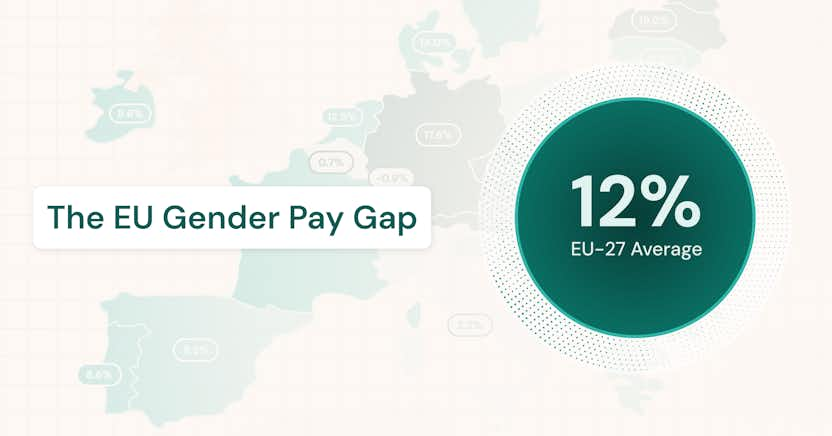Pay Transparency: What It Is and How to Do It Right

Learn more about the following beqom products
In today’s workplace, fairness isn’t just a nice-to-have—it’s a critical factor that shapes employee trust, satisfaction, and long-term loyalty. Pay transparency has emerged as a powerful tool to foster equity, eliminate ambiguity, and build a culture where employees feel genuinely valued. By openly addressing how compensation is determined, organizations can break down barriers of suspicion, encourage accountability, and demonstrate their commitment to fair practices.
As the demand for transparency grows, both employees and job seekers are prioritizing openness in how companies approach pay. Beyond its ethical implications, pay transparency is fast becoming a strategic necessity to attract top talent, comply with evolving U.S. and European regulations, and boost engagement. When employees trust they’re compensated fairly, morale improves, productivity rises, and businesses thrive. In this article, we’ll explore the transformative impact of pay transparency and share actionable steps for implementing it effectively in your organization.
How does pay transparency work?
Pay transparency in the workplace focuses on openly communicating with employees about how their pay is determined without necessarily revealing individual salaries publicly. This involves clearly outlining the factors influencing compensation, such as experience, education, job performance, and market standards. Employers may share salary ranges for specific roles, explain how raises or bonuses are calculated, and provide transparency about the promotion criteria.
This way, organizations can build trust, promote honesty, and ensure employees understand how their contributions are valued.
What are the pros and cons of pay transparency?
Pros of pay transparency
- Attracts and retains talent
Transparency around pay fosters an open, trustworthy environment that appeals to potential hires. Candidates are more likely to apply when they know a company values fairness, while current employees remain loyal, knowing they are being compensated fairly. - Creates a positive reputation
Companies that adopt pay transparency earn a reputation for openness, increasing stakeholder trust. This reputation can extend beyond employees to include customers and business partners, enhancing the company's overall image and employer brand. - Ensures fairness
Pay transparency directly tackles wage disparities, particularly regarding gender, race, or other factors. Companies can ensure a level playing field for all employees by openly addressing pay structures. - Establishes trust
Employees who know how their compensation is determined are more likely to trust their employer. This trust boosts morale, leading to a more engaged and satisfied workforce. - Improves productivity
A clear understanding of pay structures can motivate employees to work harder, knowing their efforts will be fairly rewarded. This clarity reduces distraction and anxiety about compensation, allowing workers to focus on performance.
Cons of pay transparency
- Increases possible salary negotiations
When openly discussing salaries, employees may demand raises, leading to increased negotiations. This can result in wage compression or financial strain on the company. - Causes unhealthy competition
Employees might start comparing their wages with others, leading to competition and dissatisfaction if they feel they are being paid less than their peers. - Reduces talent pools
By publicizing pay ranges, companies might alienate some candidates who feel the offered salaries do not meet their expectations, potentially limiting the pool of qualified applicants. - Can be difficult to implement
Introducing pay transparency requires careful planning and restructuring, which can be time-consuming and costly. Companies must ensure they comply with local laws while maintaining internal harmony.
How many countries and US states have pay transparency laws in 2024?
There are currently 19 countries and 12 US States — plus some cities and counties — that have implemented pay transparency laws as of 2024. In the US, states like Hawaii, Colorado, and New York have introduced laws mandating transparency, requiring employers to provide salary ranges in job postings. In Europe, the EU Pay Transparency Directive is driving similar efforts, compelling employers across EU member states to increase transparency around pay, address wage disparities, and ensure equitable compensation. Some examples of regulations include:
Hawaii
Starting January 2024, Hawaii mandates that employers with 50 or more employees include hourly rates or salary ranges in job postings.
Vermont
In Vermont, the law mandates that any job advertisement for a position that includes commission-based pay, either fully or partially, must include a statement indicating that the employer cannot provide a specific minimum or maximum salary or wage range due to the commission structure.
Maryland
Maryland’s laws mandate that all employers, both public and private, must include the following in both internal and external job postings, including those posted through third parties: the wage range, including the minimum and maximum pay; a general overview of benefits; and information on any additional compensation.
Colorado
In Colorado, the law requires an employer, which the act defines broadly as any entity that employs at least one employee in the state, must disclose in good faith in each job posting the hourly or salary compensation or range of the hourly or salary pay; a general description of the benefits and other compensation associated with the position; and the date the application window is expected to close.
New York
In New York State, businesses with four or more employees must provide job descriptions and list compensation ranges for designated job opportunities, promotions, and transfers.
Rhode Island
Rhode Island’s pay transparency laws aim to close wage gaps by ensuring employees understand how their pay compares to others in similar roles.
United Kingdom
In the UK, employers with 250 or more employees are required to report on their Gender Pay Gap. This involves reporting on pay structures and offering high-level statistics on gender pay gaps, such as comparing male and female employees at both senior and junior levels. Additionally, UK-listed companies are required to conduct Executive Pay Reporting. As part of their "Plan to Make Work Pay," the new government has introduced a draft bill to establish the full right to equal pay for ethnic minorities and disabled individuals. The bill also proposes mandatory reporting on ethnicity and disability pay for employers with 250 or more employees.
France
In France, the 2018 Freedom to Choose Your Professional Future law requires companies to publish an annual report on the Gender Equality Index (Index Egapro), which measures the gender pay gap. Companies scoring below 75 must take corrective actions and may face fines if they do not comply.
How to implement pay transparency within your organization
1️⃣ Consider your region’s pay transparency laws
Companies must first understand which laws apply to them to implement pay transparency effectively. Pay transparency regulations vary by state and country, so researching and adhering to the relevant legal frameworks is essential. Refer to beqom’s overview of local pay equity and transparency laws for country and state specific regulations. European companies can also refer to our Guide to the EU Pay Transparency Directive.
2️⃣ Conduct analysis to evaluate current pay structures
Conducting a comprehensive pay structure analysis allows businesses to identify any existing pay gaps and benchmark their compensation policies against industry standards. Tools like pay equity software help streamline this process.
3️⃣ Establish new compensation structures
Companies may need to restructure their compensation policies to ensure compliance and fairness. Leveraging compensation management software allows businesses to create fair and competitive pay systems.
4️⃣ Develop a transparent pay policy
A well-defined pay policy outlines how salaries are determined, the factors influencing pay increases, and how bonuses or other incentives are calculated. This policy should be clearly communicated to all employees. See our helpful guide, Navigating Pay Transparency: A Complete Handbook.
5️⃣ Train HR and managers
Human Resources and managers are key in implementing and maintaining pay transparency. Training them on the new policies ensures consistency in messaging and handling employee concerns.
6️⃣ Inform employees regarding changes
Employees should be informed about any pay transparency changes that may impact them. Transparent communication helps to foster trust and minimize confusion.
7️⃣ Implement policy and adjust as necessary
Once the transparency policy is in place, ongoing evaluation is crucial. Companies should assess the effectiveness of their policies and make adjustments where necessary to ensure long-term success.
Achieve pay transparency in your organization with beqom’s solutions
Achieving pay transparency in your organization can be streamlined using beqom’s comprehensive solutions. beqom offers pay transparency software designed to ensure compliance with pay transparency laws and promote fairness within your organization. Our tools allow you to clearly communicate salary ranges, pay structures, and the criteria for compensation, helping to eliminate wage gaps and ensure equitable treatment of employees.
beqom’s compensation management software provides a robust framework for creating and managing transparent pay policies. It helps organizations align pay structures with market standards, benchmark salaries, and adjust compensation policies based on performance and other relevant factors. This ensures employees understand how their pay is determined and promotes trust within the workforce.
Using beqom's pay equity software, companies can conduct deep analyses of pay structures, identify gaps, and implement solutions that foster transparency. Discover how our pay transparency tools can ensure a clear pathway for your business to meet legal requirements and build an open, trust-based culture around compensation.
Contact beqom today to learn how to make pay transparency a reality at your organization.







